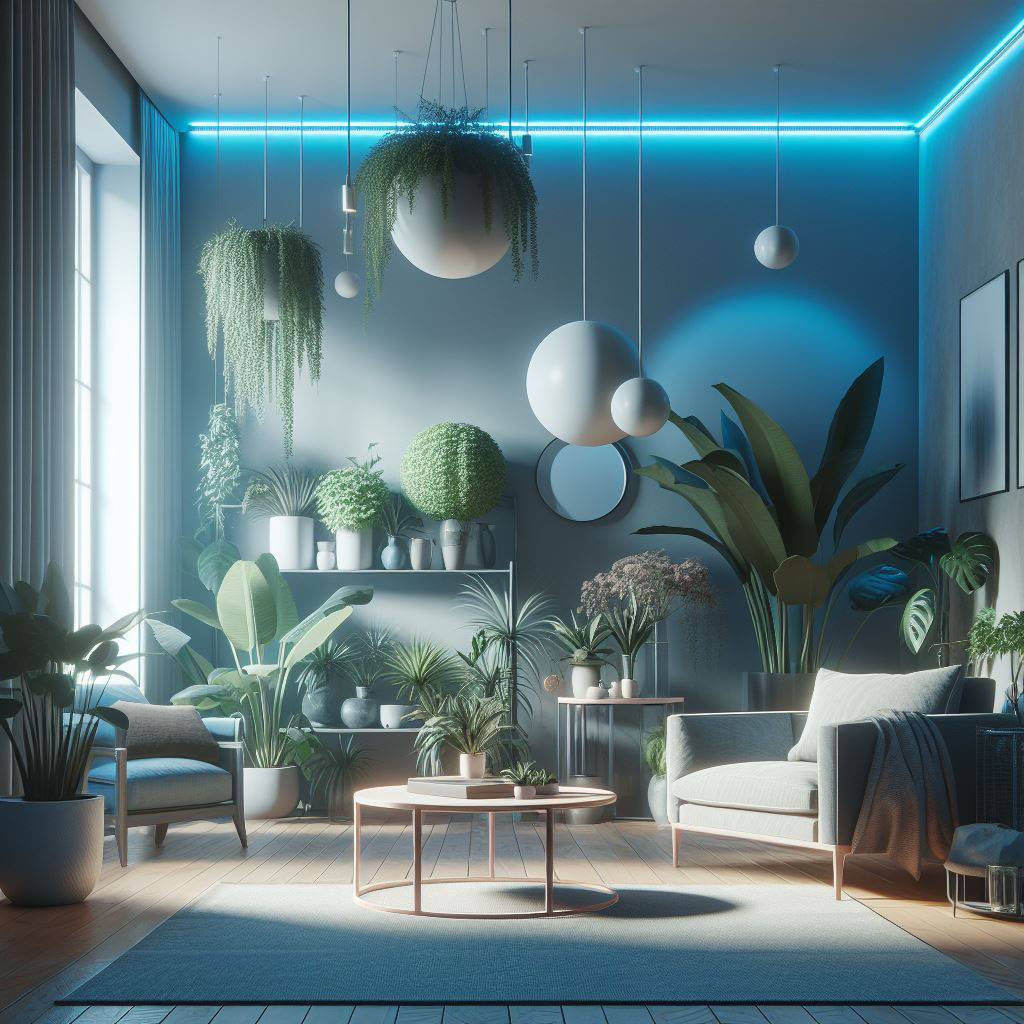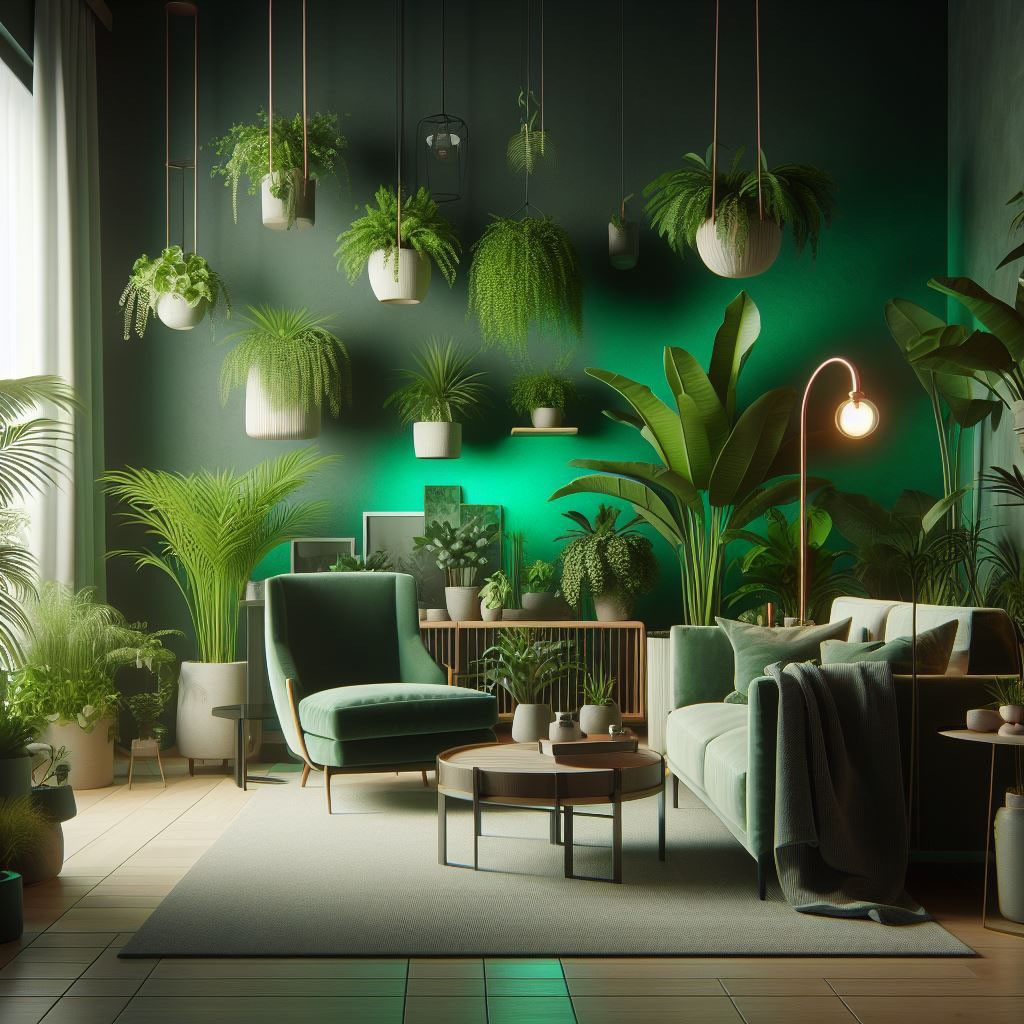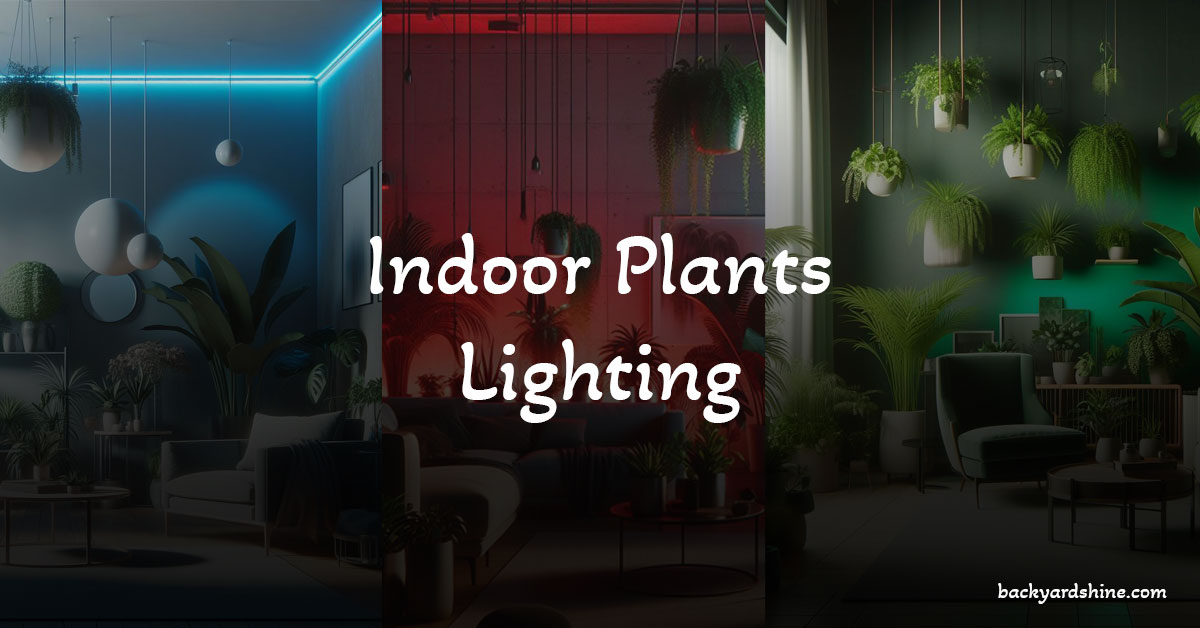While designing your space, the lights you choose can create an impact than just the ambiance.
Selecting lights that emit precise wavelengths allows you to assist the growth of your indoor plants. As we explore exceptional preferences for lights in your home think about the wishes of your botanicals.
Optimizing conditions for your greenery ensures your decor thrives. In this article, we will give an explanation of which wavelengths are perfect and how to select bulbs that emit these colors.
With the right know-how, you can select lighting that benefits your plans and style. Continue to study and explore plant growth light spectrum to help your indoor Garden flourish with apt plant health benefits for your indoor botanicals.
Blue Light (450-495nm)
Blue light stimulates chlorophyll production, which plant life needs for photosynthesis and wholesome leaf growth. Exposure to blue light makes flowers show up extra compact and bushy. For indoor plants, the usage of bulbs with a coloration temperature of 6500K or greater will grant ample blue light.

Red Light (620-750nm)
Red light activates phytochromes, photoreceptors in plants accountable for flowering, stem elongation, and seed germination. Exposure to purple will make plants taller and leggier. Bulbs with a shade temperature of 2700K to 3200K emit mainly crimson and a long way red light.

Green Light (495-570nm)
Green is minimally absorbed through flora and in general reflected, giving them a green appearance. While now green is not highly indispensable for plant growth, imparting some inexperienced light in addition to pink and blue can result in sturdier, extra brilliant plants.

By these spectrums of light wavelength for plants, supplying the proper stability of red, blue, and green wavelengths, we can create ultimate conditions for our indoor plants to thrive. Supplementing natural light with full-spectrum or specialized plant bulbs and mild fixtures is frequently fundamental in home and office environments. With the appropriate light, our indoor garden will flourish.

Choosing the Right Indoor Grow Lights for Your Plants
Full Spectrum Lighting
Full-spectrum LED or fluorescent lights are incredible for supplementing or changing the herbal properties of our indoor garden.
Blue and Red Wavelengths
Many indoor plant lights center primarily on the blue and pink areas of the light spectrum. Blue encourages leaf boom and plant height, whilst red promotes flowering and fruiting. For most indoor plants, a combination of blue and red wavelengths will supply balanced growth.
LED grow lights that furnish a mixture of warm white, cool white, and pink diodes frequently work properly for a range of plants.
Color temperature
The colour temperature of a mild supply which is measured in Kelvin generally refers to the hue of the light. Lower Kelvin rankings around 2700K produce warmer, greater yellow light, whilst higher ratings of 6500K or more emit a cooler, bluer light.
For indoor plants, a shade temperature varying from 3000K to 6500K will swimsuit most species. Warmer light intensity for indoor plants promotes flowering and fruiting, while cooler mild encourages wholesome foliage. Using lights at a couple of color temperatures may also provide the most balanced growth for our indoor garden.

Intensity and Duration
Most indoor flowers require at least 10 to 12 hours of lighting per day; however, the plant light requirements may vary sometimes depending on the nature of the plant. The ideal light intensity relies upon the particular plants, however in general, more light is better.
Use a couple of bulbs or a greater wattage to make bigger the intensity for light-hungry plants. Be very cautious to keep away from overheating leaves, in particular for tropical plants. Proper ventilation and air circulation are essential for indoor plant lighting.
Optimizing Light Intensity and Exposure for our Indoor Plants
To thrive, indoor plants require adequate light publicity and intensity. The most efficient quantity of light relies upon the specific wishes of every plant species. Some require a brilliant light, whilst others select a shade. Measure the light in the vicinity of the place you intend to grow your plant using a light meter to decide if it will supply appropriate conditions.
Duration of Exposure
The variety of hours of light publicity impacts plant growth and health. Most indoor plants need 12 to 16 hours of light per day. Using a timer, you can control the period your plant receives supplemental light from a grow light. Increase the hours of light at some point in the developing season and decrease in the wintry weather when the growth slows.
Intensity
Light intensity usually refers to the brightness of the light that can be measured in lux or foot candles. Insufficient mild depth will motivate bad growth, while too a whole lot of depth can sunburn leaves. The ideal range for most indoor plant life stages is between 2,000 and 5,000 lux. Plants that require excessive light, such as succulents, want at least 6,000 lux to thrive. Measure depth with a light meter and modify the distance from the source to achieve the most effective degree for your plant.
Spectrum
The coloration or wavelength of light also influences plant growth. Full-spectrum bulbs that supply a balance of cool and heat light promote healthful foliage. Blue or cool mild encourages leafy growth, whilst red or warm light stimulates flowering. Using bulbs with a color temperature of around 6500K will supply the optimal range for photosynthesis in most indoor plants.

By providing the proper duration, intensity, and spectrum of light for each of our indoor flora according to its specific needs, you will optimize their increase and keep them thriving. Making adjustments to the light stipulations and re-measuring with a meter can assist right any troubles with poor fitness or lack of growth. The rewards of your efforts will be vibrant, flourishing houseplants.
As we’ve learned, the light color for plant growth and the wavelengths that reach your indoor plant influence their growth and basic health. While herbal or organic sunlight presents the full spectrum, most artificial lights are biased toward colors. Think well before deciding the plants to be kept indoors to optimize light usage effectively.
